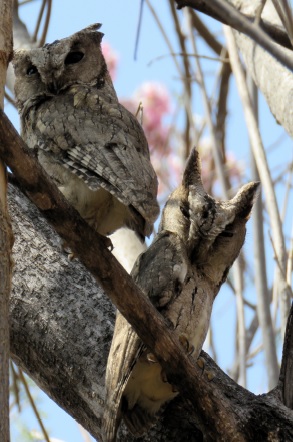The reason why I started writing “RV Matters” on the school noticeboard was to draw the attention of “RVites” to things that happen around us on the campus. It was also a forum, which I hoped, would invite contributions from others – students and teachers - on their observations. Somehow this has not yet happened but I sincerely hope we will get them to write soon.
However I do get feedback from some of the more active students and teachers on their observations – Yash (IX) reported a few days ago of about a chameleon being killed and consumed by a cat. Siddhu (XI) came up with a sighting of the Chestnut-headed bee-eater on the school campus last evening. Many observers have reported their sightings of the goings-on at the flame of the Forest (Palash) tree, still in flower, where congregations of parakeets, crows, sunbirds, Spangled or Hair-crested drongos have been noticed. A pair of Red Spurfowls that were trapped in the backyard of one of the hostels was rescued by the alert inmates. More reports are coming in of the sounder of wild boars behind the Badminton Court and I myself saw 5-6 of them one evening last week.
Now with the Asthachal starting, there have been students who have been noticing birds and other creatures that we have been sharing our campus with. Nirvedh (VIII) came up with a long list of birds he heard or saw during the Asthachal, one evening. Again, Yash has been befriending a Black-naped hare at the Asthachal and it has been sitting in a shrub, mere 1.5 m. from him through the 20 minutes of Asthachal on more than three or four evenings!
Yesteday, a skink joined the VIII students in their folk dance workshop! The Male Paradise flycatcher in the junior school seems to have taken on the role of a class inspector and has been entering the class-rooms and clearing them of spiders and other invertebrates besides listening to the goings-on in the class! Fortunately they now seem to know how to fly out of the rooms. A few years ago we had to remove the roof-tiles to release a bird trapped overnight in the room.
Dr Santharam





















